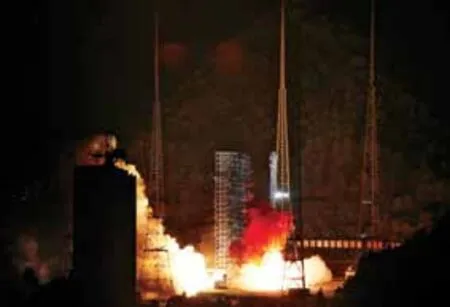A LM-3B Launches Tianlian 2-01 Satellite
2019-05-15ZHENGEnhong

A LM-3B carrier rocket is putting the Tianlian 2-01 satellite into orbit Photo: XIE Qiyong
China launched the Tianlian 2-01 satellite on a LM-3B carrier rocket from the Xichang Satellite Launch Center at 23:51 Beijing time on March 31, 2019. Then the satellite entered its Geosynchronous Transfer Orbit (GTO). The Tianlian 2-01 satellite was developed by the China Academy of Space Technology. As the first satellite to constitute China's second-generation data relay satellite network, it will provide data relay, measurement and control, transmission services for manned spacecrafts such as spacecraft, space laboratory, and space station, MEO and LEO satellites for remote sensing, mapping and meteorology.
China has successively launched Tianlian 1-01/02/03 satellites from 2008 to 2012, making China the second country in the world to have a relay satellite system with a global coverage capability for MEO and LEO spacecrafts. The Tianlian 1-04 satellite entered its orbit and completed in-orbit test in 2016, realizing global networking operation together with the other three satellites.
Based on the first-generation relay satellite and developed on the DFH-4 platform, the Tianlian 2-01 satellite is more advanced in multi-objective service and data transfer with characteristics such as higher multi-objective service capability, faster data transfer, wider coverage and longer designed life.
The LM-3B carrier rocket was developed by the the China Academy of Launch Vehicle Technology. This was the 301st flight of the LM launch vehicle family and the 99th flight of the LM-3B series launch vehicle. (ZHENG Enhong/China Space News)
杂志排行
Aerospace China的其它文章
- Application of Genetic Algorithm in Estimation of Gyro Drift Error Model
- Numerical Simulation of Unsteady Flow of Reentry Capsule
- Analysis and Solution of Multipath Effect on Wireless Communications of Launch Vehicle
- CFOSAT-1 Realizes First Joint Observation of Sea Wind and Waves
- Application Advantages of Staring Area Imaging Technology (SAIT) for Microsatellites
- Analysis of China's Nano andMicrosatellite Industry Development
